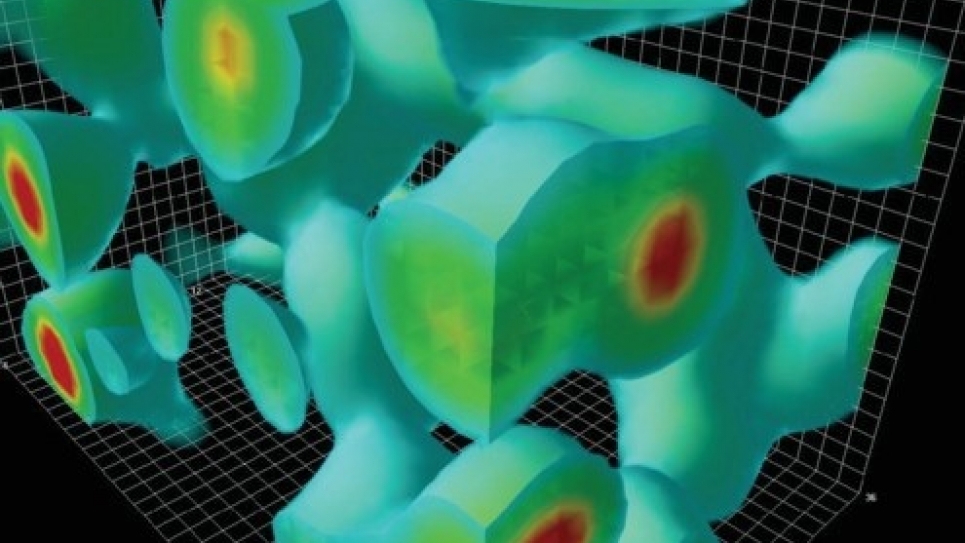
Deepening the Understanding of Interactions between Quarks and Gluons
This research aims to deepen the understanding of the interactions of quarks and gluons, the basic constituents of 99% of the visible matter in the universe, and will play a key role in ongoing efforts to develop a unified theory of the four fundamental forces of nature.
Approach
Scientists conducting research in Lattice Quantum Chromodynamics (QCD) have logged more than 100 million core hours on the Blue Gene/P at the Argonne Leadership Computing Facility. The scientists are generating gauge configurations with up, down, and strange quarks on lattices that are sufficiently fine-grained and have sufficiently small up and down quark masses, to enable the extrapolation of key quantities to their physical values found in nature. This work has been made possible through allocations awarded by the U.S. Department of Energy’s INCITE program.
Results/Accomplishments
The BG/P has tremendously accelerated the generation of the gauge configurations. In many cases, the rate of progress has been accelerated by a factor of 5 to 10 over what has been possible with other machines. Significant progress has been made in simulations with two different implementations of the quarks–domain wall and staggered.
The domain wall configuration generation is going extremely well, with a statistically meaningful ensemble now available for a lattice size of 323 X 64. Generation of 483 X 64 ensembles has also been demonstrated. These are the largest domain wall lattices ever attempted and will be the central focus as soon as more statistics from the smaller ensemble have been obtained. Substantial analysis for K meson physics is under way, and analysis needed to study nucleon structure is starting.
For the staggered quarks, a set of runs with a lattice spacing of 0.06 femtometers (fm) is nearing completion, and a new ensemble with a spacing of 0.045 fm and lattice size of 643 X 192 is about one-fourth complete. These are the most challenging staggered ensembles generated to date. These configurations are being used to calculate the decay constants of pi and K mesons, the weak transition coupling (CKM matrix element) between the up and strange quarks, and the masses of the lightest strongly interacting particles. This work will greatly improve the accuracy of the research team’s determination of all of these quantities and a wide range of other quantities of importance in high energy and nuclear physics.
Future Efforts
A portion of planned future calculations focuses on completing the data sets now being created on the Argonne BG/P. For the domain wall fermion work, researchers must make good on the initial promising experiments begun with a 483 X 64 lattice volume. This will permit calculation with the lightest quark masses studied to date using chiral fermions, reducing the errors associated with extrapolating to the physical quark masses by perhaps a factor of two. However, the most exciting next steps await the results of the current Argonne running. If early strong indications of large chiral corrections are borne out, the next set of questions in weak interaction and nucleon physics will require substantially larger lattice volumes. The researchers have been working intensely over the past nine months to develop new methods that will permit such studies to be carried out using the Argonne BG/P machines. They expect that production running using these new methods could begin by early fall.
The research team working with staggered quarks is about to use the configurations generated at the ALCF in its studies of the decays and mixings of particles containing heavy quarks, specifically the D, Ds, B, and Bs mesons. These calculations, coupled with recent experimental results, will enable substantial improvements in determining a number of elements of the CKM matrix.
The CKM matrix elements are among the least well known parameters of the Standard Model of subatomic physics, which encompasses current understanding of the fundamental forces of nature. The planned calculations will enable precise tests of the Standard Model, aiding in the effort to obtain a deeper understanding of fundamental physics.